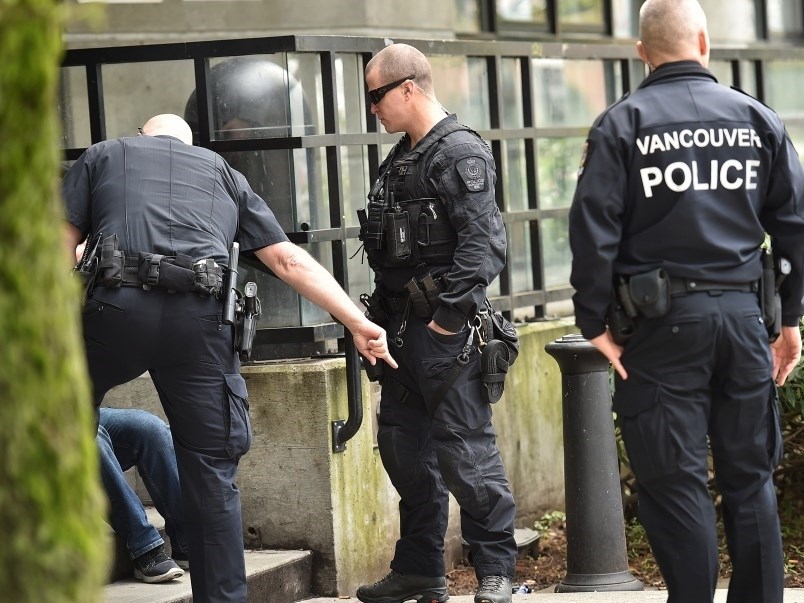In late November 2023, only three per cent of Canadians identified crime and public safety as the most important issue facing the country. Practically seven in 10 selected housing, homelessness and poverty (29 per cent), the economy and jobs (21 per cent) or health care (19 per cent) as their main areas of concern.
Federal politicians have never steered clear of discussing crime during election campaigns. The Conservative Party successfully campaigned on mandatory minimum sentences during the tenure of Stephen Harper, and the Liberal Party completed a national freeze on the sale, purchase or transfer of handguns by individuals. Still, Canadians tend to look at public safety as the responsibility of provincial and municipal administrations.
Majorities of residents in Manitoba (63 per cent), B.C. (54 per cent, down five points since 2023) and Alberta (also 54 per cent) say that the level of criminal activity in their community has increased in the past four years. The results are better in Ontario (48 per cent) and Saskatchewan (42 per cent), where fewer than half of residents say crime is on the rise.
Despite broad belief that crime has increased, only 23 per cent of Albertans say they have been the victims of a crime that involved the police in the past four years. The proportions are lower in Saskatchewan (20 per cent), Manitoba (18 per cent), B.C. (17 per cent) and Ontario (14 per cent).
The fear of falling victim to a crime is higher. More than half of British Columbians (51 per cent), Albertans (54 per cent) and Manitobans (also 54 per cent) say they experience this anxiety “a great deal” or “a fair amount.” The same is true for fewer than half of Ontarians (45 per cent) and Saskatchewanians (37 per cent).
Our collective sense of safety grows when we are closer to home. Majorities of residents in the five provinces say they feel “very safe” or “moderately safe” walking alone in their own neighbourhood after dark. The best rating on this question belongs to Ontario (71 per cent), followed by B.C. and Saskatchewan (65 per cent each), Alberta (63 per cent) and Manitoba (57 per cent).
When respondents ponder the causes of local criminal activity, clear patterns emerge. Majorities of British Columbians and Manitobans (56 per cent each) blame addiction and mental health issues “a great deal” for the current state of affairs. The proportions are lower in Alberta (48 per cent), Saskatchewan (40 per cent) and Ontario (39 per cent).
Gangs and the illegal drug trade are a significant catalyst for criminal activity for more than two in five Manitobans (44 per cent) and Saskatchewanians (43 per cent)—less so in B.C. (39 per cent), Ontario (35 per cent) and Alberta (33 per cent).
There is some consistency on a troubling issue. More than a quarter of residents in all provinces say an inadequate court system is to blame for criminal activity. In B.C., Alberta and Manitoba, at least of third of residents say so.
Finally, the notion of poverty and inequality leading to crime resonates with more than a third of British Columbians (36 per cent) and Manitobans (34 per cent), with slightly lower numbers in Alberta and Ontario (31 per cent each) and Saskatchewan (30 per cent).
The results suggest that the struggle between perception and reality remains at play on the public safety file. Ontario and Saskatchewan are home to residents who are not as fearful of crime as their counterparts in Alberta, B.C. and Manitoba. Still, fewer than one in four residents of these five provinces were victims of a crime that was reported to the police in the past four years.
Mario Canseco is president of Research Co.
Results are based on online surveys conducted from March 29-31 among 800 adults in B.C., and 600 adults in each of Alberta, Saskatchewan, Manitoba, and Ontario. The data has been statistically weighted according to Canadian census figures for age, gender and region for each province. The margin of error is plus or minus 3.5 percentage points for B.C., and plus or minus four percentage points for Alberta, Saskatchewan, Manitoba and Ontario, 19 times out of 20.





